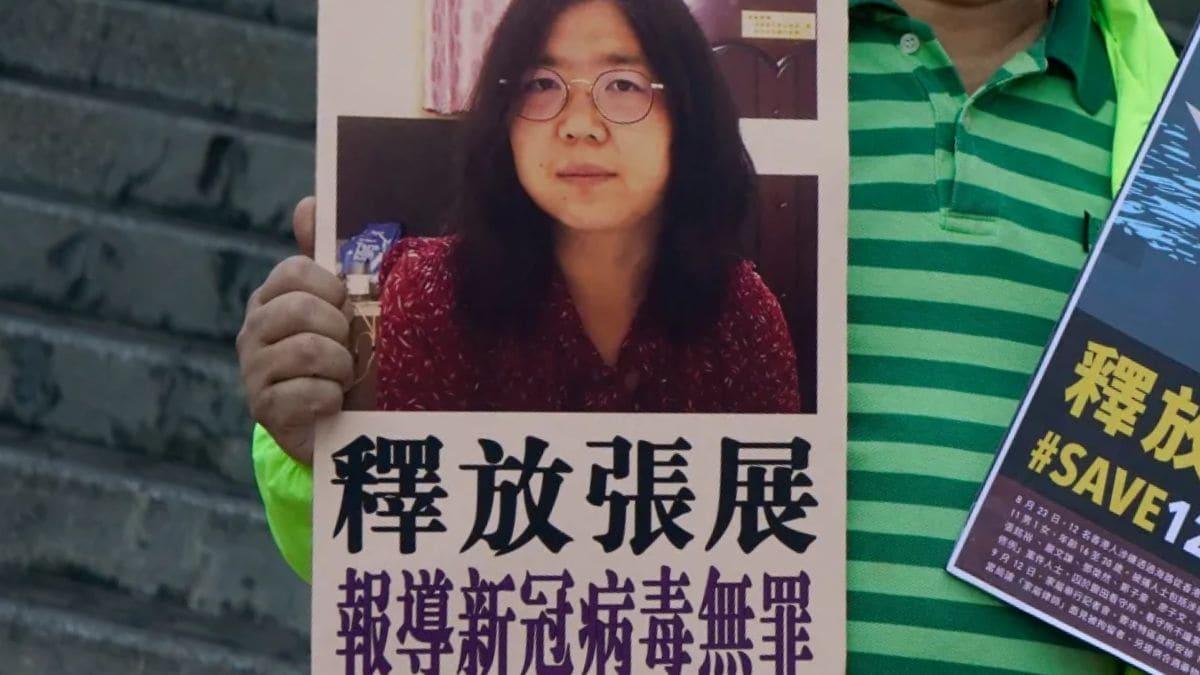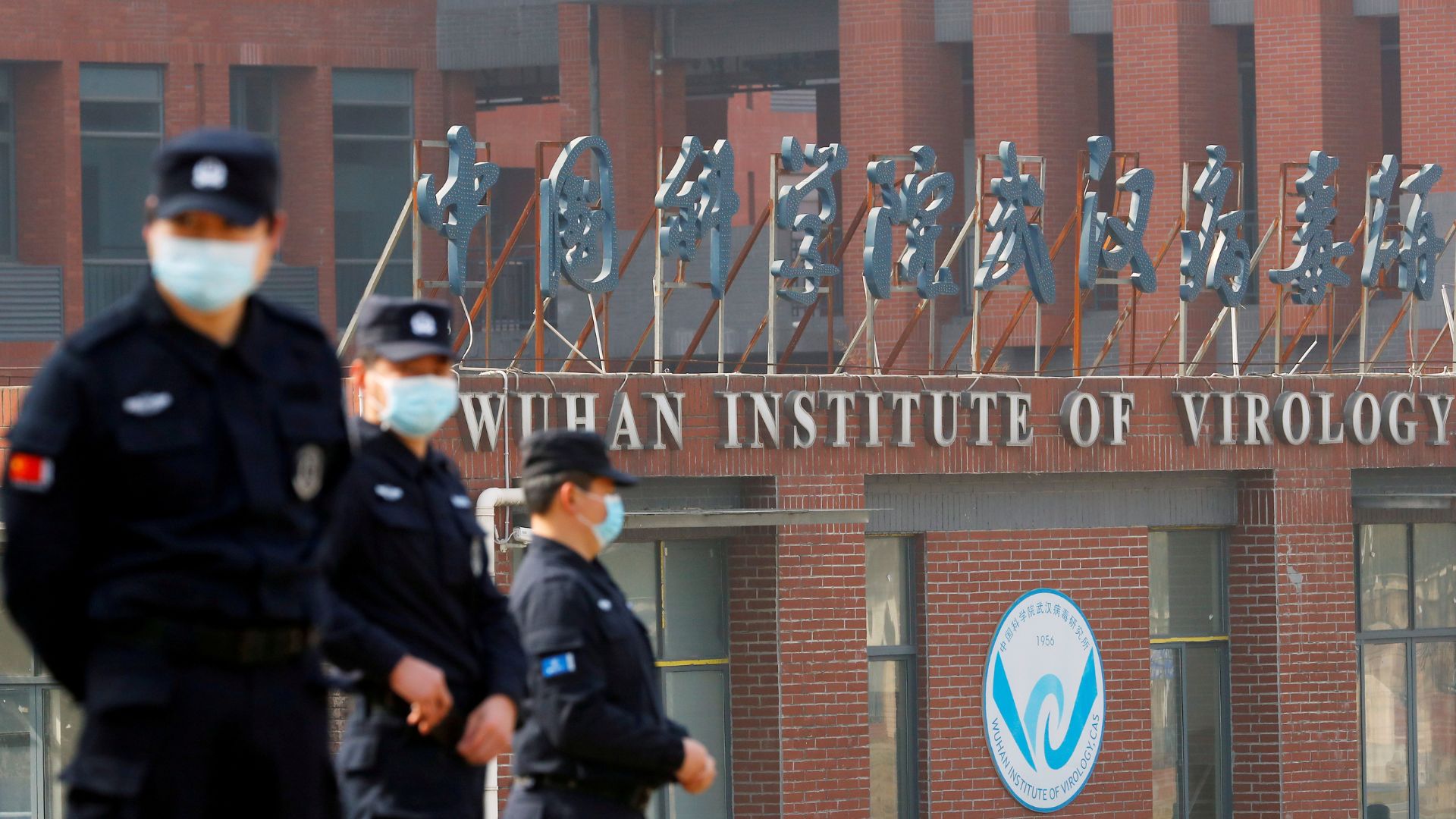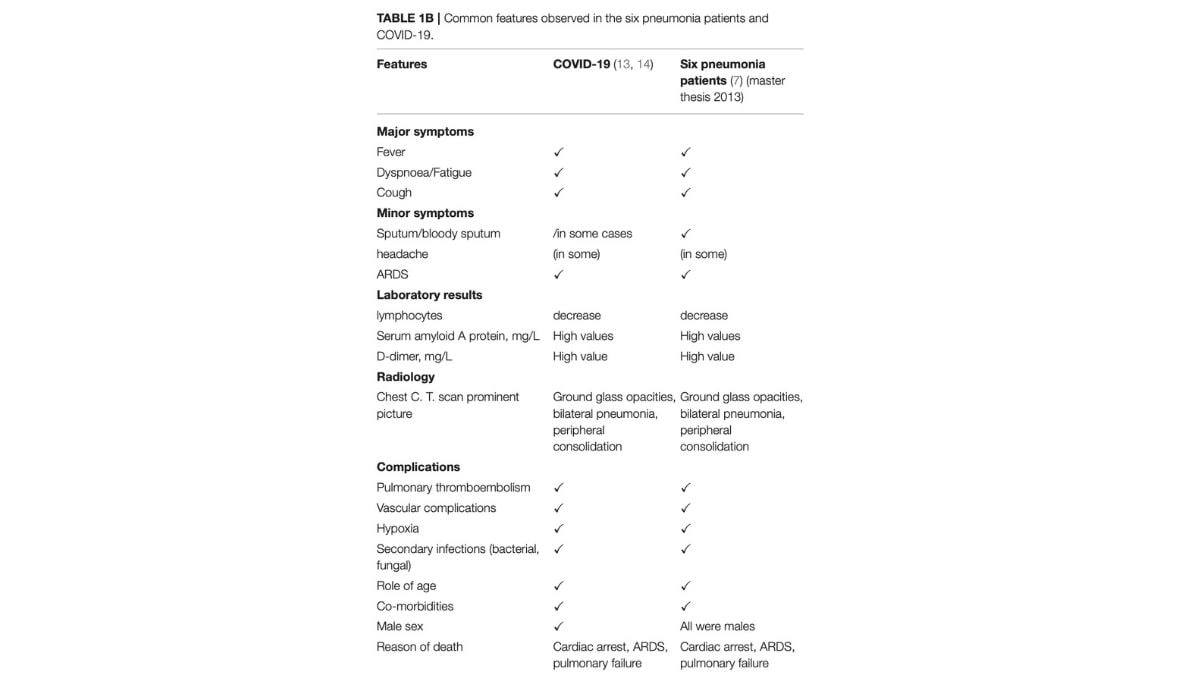Countries that are members of the World Health Organization (WHO) are required to notify the global body of events that “may constitute a public health emergency of international concern” within 24 hours, according to Article 6 of the International Health Regulations (IHR).
Once the Article 6 notification has been issued, Article 7 kicks in which requires the concerned member-state to “provide to WHO all relevant public health information”.
By December 27, 2019, the Chinese authorities had learnt that a new coronavirus was behind the outbreak of pneumonia in Wuhan city. By then, the genome of the newly found virus —its genetic structure— had been mapped. The Chinese authorities also knew that the virus was spreading from one person to another.
Let’s understand the chronology
Yet, it was only on December 31 that China notified the WHO about the outbreak in Wuhan — the notification was essentially forced by whistleblowers. Even when the WHO was notified, the agency was told neither about genome nor about transmission.
From the onset, it appears from the available information in the public domain that the Chinese regime had been violating international norms. The most likely explanation of the turn of events suggests that the actions of the Chinese regime turned a local outbreak into the worst global pandemic in living memory.
It was only on January 5, 2020, that Zhang Yongzhen, a virologist at the Shanghai Public Health Clinical Center (SPHCC), uploaded the genome to a US-based database but inexplicably embargoed access till July. Two days later, he submitted a paper to Nature detailing the genome which he co-authored with Edward Holmes, a virologist at the University of Sydney, Australia.
By January 10, Nature sent out the manuscript for peer review. Around the same time, prominent scientists like Jeremy Farrar —who would go on to become WHO’s Chief Scientist— started criticising that papers were being submitted to journals even though the WHO was being kept in the dark.
Two days later, under pressure, Zhang shared the genome with Holmes, who in turn uploaded it to a website run by a British scientist.
This is how the world learnt about the genome of novel coronavirus nearly two weeks after it had been mapped. But it was not the end of Chinese deceit.
On January 14, the WHO told the world that there was no evidence of human-to-human transmission — as it had been informed by Chinese authorities.
It was only on January 20 that China acknowledged human-to-human transmission and lockdown orders were issued on January 24 — more than a month after the outbreak began in Wuhan.
Why it matters
By January 20, as many as 5 million people travelled out of Wuhan — countless of them carried the virus with them. Millions more travelled from China to the rest of the world. This was of course the time of Christmas and New Year holiday travel.
By not telling the world of the severity of the outbreak and by hiding the fact that the virus was transmitted between persons, China turned a city outbreak into a global pandemic, says Jamie Metzl, a Senior Fellow at the Atlantic Council and a specialist on China who has previously served at the US Department of State and White House National Security Council.
In any other open country, such as the United States, the authorities would have taken the logical steps of alerting the world and sharing the genome at once and the novel coronavirus outbreak would have been little more than a kitchen fire, says Metzl.
“The Chinese government turned the equivalent of a stove fire into a kitchen fire, the kitchen fire into a city fire, and the city fire into ultimately a global inferno. In the critical first days and weeks, the Chinese government did everything wrong and everything possible for political purposes to prevent the kind of response that was so urgently needed. If not for the unique pathologies of the Chinese state, there almost certainly would not have been a pandemic,” says Metzl.
But leak happened, information found a way
Against all odds, information leaked — at great personal cost
Weeks after the outbreak began, on December 30, some Chinese doctors blew the whistle. They were quickly rounded up and the crackdown was swift.
Around the same time, Chinese authorities ordered all patient samples to either be destroyed or transferred to designated institutions.
Despite the swift Chinese crackdown, the whistleblowers did their job. On December 30, ProMed, an informal network formed in 1994 for the reporting of information related to emerging and re-emerging infectious diseases, sent out an alert regarding the viral outbreak in Wuhan.
The whistleblowers paid a great personal cost — one of them paid for the courage with his life. Dr Li Wenliang, one of the whistleblowers, died weeks later. While the official cause of death was Covid-19, you can never be sure of a totalitarian regime’s word regarding a whistleblower’s death.
After the whistle was blown
Zhang, the virologist who shared the genome with Holmes, lost access to his lab and his research was essentially halted. Citizens discussing the outbreak and lockdowns were censored and punished. One well-known citizen journalist, Zhang Zhan, was jailed for four years for covering the pandemic on social media and YouTube.
In February 2024, Zhang in a video said that authorities were “imprisoning” people in the name of pandemic prevention and that “without the truth, everything is meaningless”. In other videos, she showed a hospital overflowing with patients and a crematorium working past midnight.
“It’s 12:40 am. The sound of the funeral home’s crematorium. They work day and night,” said Zhang in the video.

As such coverage ran against the narrative of the Communist Party of China (CPC), which was peddling a false normalcy on the back of repressive state machinery, Zhang’s coverage did not continue for long. As happens in dictatorships often, she disappeared out of the blue in May.
In her last video shortly before her disappearance, Zhang captured the tragedy of over a billion people in the grips of tyranny for decades.
“The government’s way of managing this city has just been intimidation and threats. This is truly the tragedy of this country,” said Zhang in her last video.
If not for whistleblowers or Zhang, the world would have never learnt the basics of the pandemic in time. Even the WHO was notified a day after ProMed had sent out an alert.
It was a strange virus
Even as the world was grappling with Chinese deceit in hiding the outbreak, genome, and human-to-human transmissions, scientists were baffled by the virus itself.
The novel coronavirus, which would be later named SARS-CoV-2, had two unique features that stood out.
One, the virus was pre-adapted to infect humans from day one.
Usually, when pathogens emerge, they take time to master the human-to-human transmission, but that was not the case with SARS-CoV-2. In a study in May 2020, Shing Hei Zhan, Benjamin E Deverman, and Alina Chan of Broad Institute of MIT and Harvard noted that the virus “was already pre-adapted to human transmission to an extent similar to late epidemic SARS-CoV” — the SARS-CoV being the coronavirus that caused the SARS epidemic of 2002-03.
Two, SARS-CoV-2 had something called ‘furin cleavage sites’ (FCS). The FCS on the spike protein of the virus allows it to enter human cells. In simple words, it is this feature that gave the virus the ability to infect humans.
What made the presence of FCS in SARS-CoV-2 strange was its rarity in the family of coronaviruses to which SARS-CoV-2 belongs. Richard H Ebright, a molecular biologist at Rutgers University, says that SARS-CoV-2 is the only one of more than 800 known SARS-related coronaviruses that has FCS.
The probability of encountering a natural SARS-related coronavirus possessing FCS having the genetic make-up that SARS-CoV-2 has ranges from less than 1 in 24,000 to less than 1 in 720,000, says Ebright, the Board of Governors Professor of Chemistry and Chemical Biology at Rutgers and Laboratory Director at the Waksman Institute of Microbiology.
Without FCS, it is “unlikely” SARS-CoV-2 would have caused a worldwide pandemic, says Ebright.
A lab or the breeding ground?
Against this background, Broad Institute’s Shing, Deverman, and Alina cautiously floated the possibility in their study that SARS-CoV-2 might have originated in a laboratory. They said the “possibility that a non-genetically-engineered precursor could have adapted to humans while being studied in a laboratory should be considered, regardless of how likely or unlikely”.
But which lab could it be? Next door to where the outbreak first happened in Wuhan lay Wuhan Institute of Virology (WIV), the world leader in coronavirus research where Shi Zhengli, known as ‘Bat Woman’ for her work on bat coronaviruses, worked. Shi and her collaborators had proposed inserting FCS, the extremely rare feature of SARS-CoV-2 that gave it the ability to cause the pandemic, into coronaviruses in her lab the previous year — more on that later.
Moreover, Shi’s lab also had the closest ancestor of SARS-CoV-2 in her lab from 2013 that was a 96.2 per cent match. She mentioned nonchalantly in a paper in Nature on Feb. 3 that this virus from 2013, RaTG13, was collected in Yunnan province.

The significance of RaTG13 was learnt in May — not from Shi but from open-source investigations and analyses by internet sleuths from a collective called DRASTIC, short for ‘Decentralised Radical Autonomous Search Team Investigating Covid-19’.
In May 2020, Prasenjit Ray, who goes by the name ‘The Seeker’ on X, found two theses by Chinese medical professionals in Chinese repositories after searching the web for days. Ray along with three other scientists —including two Indians— connected the dots.
[READ HERE THE COMPLETE STORY OF HOW A COVID-LIKE DISEASE KILLED MINE WORKERS IN CHINA 2012 AND CHINA COVERED IT UP: 5 years later, smoking gun points to China’s Wuhan lab in search of Covid-19 origin]
Two days before Shi’s paper, a separate team of Chinese scientists had reported in another paper that a virus found in Yunnan, BtCoV/4991, had a 98.7 per cent match with SARS-CoV-2. Prompted by a discussion on an online forum on February 20, Rosanna Segreto, a microbiologist at the University of Innsbruck in Austria, figured out there was a 100 per cent match between BtCoV/4991 and RaTG13. It was clear the two were the same.
A regime covers up the leak of Covid origin
Why did Chinese scientists change the name of viruses? One might call it a naming mistake or a sampling error if it would have been a singular mistake or omission. However, the string of cover-ups so far indicates that the change of name could have been another effort to hide the extent of risky viral research that Chinese scientists were doing.
Once DRASTIC put out the Chinese cover-up in public domain, Shi admitted in July that BtCoV/4991 and RaTG13 were the same — the BtCoV/4991 being a partial sequence of the full genome of RaTG13.
Where did the virus come from though? The theses Ray discovered answered the question. The virus came from a mine in Yunnan’s Mojiang county where four of six sick mine workers died from a SARS-like virus’ infection in 2012.
In the wake of Segreto’s discovery and armed by two theses he had found, Ray reached out to Pune-based scientists Monali Rahalkar and Rahul Bahulikar.
In October, Rahalkar, a scientist at the Agharkar Research Institute (ARI), and Bahulikar, a Senior Scientist at the BAIF Development Research Foundation, published a paper in Frontiers in Public Health that connected the dots between the miners in 2012, the ongoing Covid-19 pandemic, and how RaTG13.
They noted (see the chart below) that miners in 2012 and Covid-19 patients had identical symptoms and disease progression.

Rahalkar and Bahulikar concluded, “Although we cannot say that RaTG13 or SARS-CoV-2 infected the miners, there is a high chance that it could be a virus quite similar in genetic composition to these two.”
Separately, Rahalkar tells Firstpost that even though RaTG13 was a 96.2 per cent match to SARS-CoV-2 on RNA level, the two viruses are much more similar.
“The interesting part is that at the amino acid-level, similarities between most of the proteins of the two viruses are 98-99 per cent. The two viruses are more similar than we think,” says Rahalkar, a Scientist-E at the Nanobioscience Group at ARI Pune.
In 2012, China had a SARS-like viral outbreak in a mine and a Covid-like disease. A virus sample from the mine with the Wuhan Institute of Virology was a near-match to the SARS-CoV-2 and the Chinese regime knew it but kept it hidden.
But the now-obvious-deceit does not end here.
The only visible difference between the disease in Mojiang and Covid-19 appeared to be that while SARS-CoV-2 causing Covid-19 was highly transmissible, the Mojiang virus did not appear to be that transmissible as only six cases were reported.
In their book ‘Viral: The Search for the Origin of Covid-19’, the Broad Institute’s Alina and science writer Matt Ridley note that it suggests that “the virus or viruses responsible for their illness very likely had not evolved to be as transmissible among humans as SARS-CoV-2 is” and the mine workers only fell sick “perhaps because they had been exposed to massive doses of the virus via the disturbed dust of bat guano within the confines of a poorly ventilated mineshaft for extended periods of time”.
How this gap between the 2012 virus and SARS-CoV-2 could have been bridged can be understood by a research project from 2018 that Wuhan Institute’s Shi was part of.
More proof suggesting non-natural origin of Covid-19
In 2021, a 75-page proposal dating to 2018 emerged that detailed how US and Chinese scientists wanted to insert furin cleavage sites (FCS) into SARS-like coronaviruses.
As Ebright, the molecular biologist at Rutgers, says, the FCS is what made SARS-CoV-2 a pandemic-potential pathogen. The DEFUSE proposal is the blueprint of inserting FCS into a coronavirus like RaTG13, which means the proposal makes way for converting a virus like RaTG13 found in the Mojiang mine in 2013 into SARS-CoV-2.
The proposal, called ‘Project DEFUSE: Defusing the Threat of Bat-borne Coronaviruses’, was submitted to the US Defense Advanced Research Projects Agency (DARPA), and was drafted by EcoHealth Alliance, the New York-based non-governmental organisation, and included Wuhan Institute of Virology (WIV). The project was rejected by DARPA.
Ray of the collective DRASTIC tells Firstpost that DEFUSE serves as the Rosetta Stone for the understanding of the origin of SARS-CoV-2 — the Rosetta Stone being the ancient inscription that allowed the world to decipher ancient Egypt’s hieroglyphics after being in dark for nearly 1,500 years.
Ray tells Firstpost, “It sheds a great deal of light about their research intentions leading up to the pandemic and it goes beyond just the furin cleavage site (FCS). The entire genome of SARS-CoV-2 aligns with what was outlined in DEFUSE. Almost every feature of the virus, from the spike protein to the FCS and the insertion of restriction sites, matches with what was outlined in the DEFUSE proposal.”
Ray says that even the timeline of the outbreak in Wuhan and the filing of the DEFUSE proposal align perfectly. He says that “any viruses developed under DEFUSE protocols would have been ready by the time Covid-19 emerged in Wuhan, which also helps explain the timing of the outbreak”.
In conclusion, Ray says DEFUSE is “about as close to a smoking gun as we’re likely to get”.
Metzl, the biotech futurist at Atlantic Council, says that the DEFUSE proposal was a “blueprint” for SARS-CoV-2.
If you did exactly what was described in the proposal, you would have created exactly like the kind of virus, SARS-CoV-2, that emerged a year later, says Metzl.
‘It’s a political pandemic, China needs to be held accountable’
Even as scientists and politicians had for a long time considered science to be apolitical, Metzl says that Covid-19 pandemic is a “political pandemic”.
Metzl says that the nature of the Chinese regime allowed for the outbreak in Wuhan to become a worldwide pandemic.
Metzl indicts the world powers for not grasping Chinese designs and facilitating its rise. He says that the world believed that if China was brought into the mainstream, such as in the World Trade Organization (WTO), then it would work in a mutually-beneficial manner and that even though China has a completely different political system, there could still be areas such as scientific collaboration and climate change that would remain apolitical.
With the Covid-19 pandemic, such ideas fell apart and it became clear that there was “no such thing as fully apolitical in an oppressive, authoritarian state like China”, says Metzl.
While Metzl is convinced that SARS-CoV-2 came from a lab, based on the series of developments from 2012 and 2019, including the DEFUSE proposal, he says that the Chinese regime would remain the primary cause of the pandemic even if the virus would have originated in nature.
“If the virus originated in nature as zoonosis supporters say, it would mean the virus jumped into humans from illegal animal trade that the Chinese regime allowed to prosper for years. It means that irrespective of the origin, whether in a lab or in nature, Chinese state practices are the cause of the pandemic,” says Metzl.
Moreover, the outbreak in Wuhan spread to the rest of the world from actions of the Chinese state after the outbreak began, says Metzl.
As Metzl highlighted earlier, if the Chinese authorities would have informed the world at once and shared everything they knew at once, ranging from the genome, the knowledge of transmission, and years of research on coronaviruses, then there would have been no pandemic as quick lockdowns in Wuhan and elsewhere would have contained the disease to a great extent.
What happened was that the Chinese authorities’ deception allowed the unrestrained travel of infected persons to all quarters of the world. The WHO says that over 770 million people fell sick and more than 7 million died.
The actual death toll is believed to be exponentially higher as testing had essentially collapsed at the peak of the pandemic and countless deaths in India and the United States were never formally attributed to Covid-19 in the absence of formal diagnosis.
Metzl says, “Regardless of how the virus originated, what happened after the initial spillover was that the Chinese state allowed the outbreak equivalent of a stove fire to turn into a global inferno. In the critical first days and weeks after the spillover, the Chinese did everything wrong and everything possible for political purposes to prevent the kind of response that was so urgently needed from the very beginning.
“They started destroying samples, hiding records, imprisoning Chinese citizen journalists for asking basic questions. They passed a gag order preventing Chinese scientists from writing or saying anything publicly about pandemic origin without prior government approval.
“They blocked international access to Wuhan — even disallowing the WHO. Chinese authorities were actively and knowingly lying, suppressing information internally, and lying to the international community.”
Metzl further says that even though the virus most likely originated in the lab but even if it originated in nature, it did not have to escalate into a worldwide pandemic.
Metzl says, “Had the spillover happened in a more open society like the USA, UK, or India, the chances of a meaningful response that would have prevented the entire pandemic would have been orders of magnitude greater. The Covid-19 is clearly a political pandemic created by the Chinese state.”
Once the pandemic began, China milked it
Metzl says that China exercised monopoly over supply chains and even as the world was reeling under an unprecedented pandemic, China went about seeking global domination.
“Whether it was supply chain or leveraging its control over a certain items like personal protective equipment or moving aggressively to seek domination in parts of the of the developing world or manipulating organisations like the WHO to prevent any meaningful response or stopping any meaningful investigation into Covid-19 origins, China knowingly did everything wrong to from the beginning. If we want to have a better outcome at the time of the next pandemic, we need to hold China fully accountable for its malfeasance in the context of Covid-19,” says Metzl.
In his book ‘Smokeless War: China’s Quest for Geopolitical Dominance’, Manok Kewalramani noted that China was “being opportunistic amid a global crisis to exploit and coerce others while furthering its strategic objectives”. While the world was distracted in Covid-19, China ramped drills around Taiwan and increased harassment of Vietnamese and Japanese vessels in disputed waters. It also began to assert itself in various theatres like it had not done in decades.
In the South China Sea, China published standardised names for 80 islands, reefs, and other geographical features as parts of its ‘cartographic warfare’ to assert sovereignty over these areas. In the Western Himalayas, Chinese soldiers clashed with India and entered into a war-like military stand-off that was only resolved partially early this year.
There was a growing sense that the Chinese leadership was pushing the envelope on territorial disputes, taking advantage of its success in containing the virus while others struggled, noted Kewalramani.
Ray from the collective DRASTIC says the Covid-19 pandemic could be seen as a plane crash killing 20 million people.
“Imagine a plane crash with around 20 million people on board. After months and years of searching for the black box to figure out what happened, you find out that someone has it but refuses to share it. Even worse, they insist that the cause is already settled and they deny any human error could be involved. That’s pretty much what we’re dealing with regarding the origins of Covid-19,” says Ray.
While experts and researchers debate the origin of SARS-CoV-2 or Covid-19, the disease it causes, through the means of science, a lot depends on the decisions of political leaders in China’s communist regime to know the exact or the final answer to illness that jolted the world like nothing else did in the post-war world.


